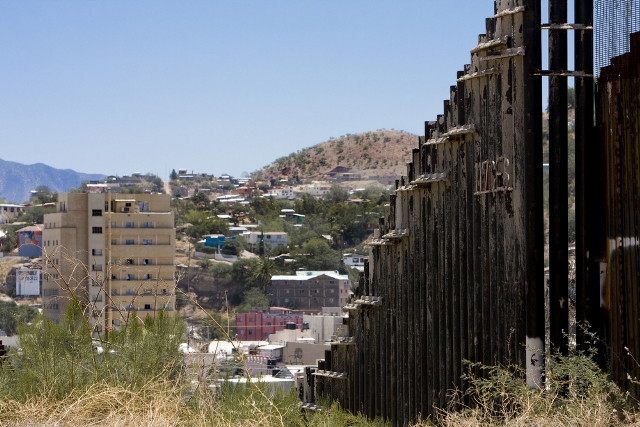 Contrary to the expectations of anti-immigrant activists, unauthorized immigrants are not leaving the United States and returning home en masse in response to the onslaught of federal, state, and local immigration-enforcement initiatives in recent years. In fact, preliminary evidence indicates that unauthorized immigration to the United States from Mexico may be inching its way upward again for the first time since the Great Recession. Why? Because unauthorized immigration responds far more to the state of the U.S. economy than it does to the intensity of U.S. immigration enforcement. This casts considerable doubt upon the nativist creed of “attrition through enforcement”—the belief that making life difficult enough for unauthorized immigrants will motivate them to “self-deport.”
Contrary to the expectations of anti-immigrant activists, unauthorized immigrants are not leaving the United States and returning home en masse in response to the onslaught of federal, state, and local immigration-enforcement initiatives in recent years. In fact, preliminary evidence indicates that unauthorized immigration to the United States from Mexico may be inching its way upward again for the first time since the Great Recession. Why? Because unauthorized immigration responds far more to the state of the U.S. economy than it does to the intensity of U.S. immigration enforcement. This casts considerable doubt upon the nativist creed of “attrition through enforcement”—the belief that making life difficult enough for unauthorized immigrants will motivate them to “self-deport.”
These conclusions are bolstered by new research from the Tomás Rivera Policy Institute in Los Angeles and El Colegio de la Frontera Norte in Tijuana. This research indicates that, when it comes to Mexican migration patterns, “northbound flows are holding steady with signs of increasing unauthorized migration, while southbound flows are decreasing. The result is that the size of the Mexican-born population in the United States has fully recovered from losses experienced during the recession.” Moreover, “given the available indicators as of mid-2012, it appears that even a relatively small increase in the demand for Mexican labor in the U.S. economy would prompt a positive response in the migration flows despite intensified enforcement efforts by the federal government, several states, and some local governments.”
Given the onset of the Great Recession in December 2007, it comes as no surprise that the researchers found that “since the first quarter of 2008, unauthorized flows from Mexico to the United States posted 16 straight quarters of decreasing volume.” But, then, “the pace of decline began to slow in the second half of 2010, and in the first two quarters of 2012 the flow marked small gains compared with the previous year.” At the same time, “the recession had a short and sharp impact on the southbound flow” of Mexicans leaving the United States and returning home. After peaking in the fourth quarter of 2009, “the number of Mexicans leaving the country then started to decrease. Since 2010, the southbound flow has held close to its pre-recession levels.” And “the data available for 2012 suggest that the number declined further.”
The timing of these events indicates that U.S. immigration enforcement plays a minimal role in shaping Mexican migration patterns. This is evidenced by the fact that unauthorized immigration has begun to increase despite immigration enforcement efforts of unprecedented scope. As the researchers write:
“Even as a buildup of border controls continued, a new push began in 2008 to seize and remove migrants from the interior of the country. This new strategy has been gaining momentum ever since. In addition, the most notable efforts to use state and local laws to crack down on unauthorized migrants have occurred since 2010. However, during these years of markedly increased enforcement, most notably 2010 to the present, the overall trends [in unauthorized immigration from Mexico] have been stability and even moderate growth. While the recession had a clear and indisputable impact on Mexican migration, the same cannot be said for the current enforcement campaign. As such, the indicators suggest that all other factors being equal, any improvement in the U.S. labor market is likely to be accompanied by an increase in Mexican migration flows.”
Unauthorized immigrants tend to go where there are jobs. And unauthorized immigrants are willing to brave border walls and immigration agents for the chance to earn a living. This is the compelling logic of unauthorized immigration—and nativists often underestimate just how powerful it is.
FILED UNDER: Economics, enforcement, Immigration Law, Nativists, recession and immigration, Restrictionists, undocumented immigration


